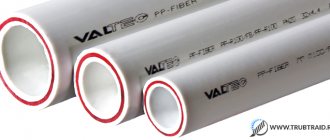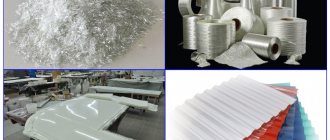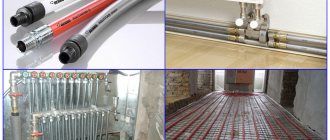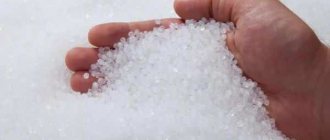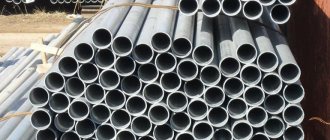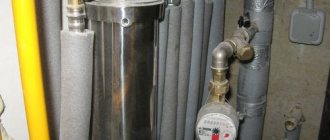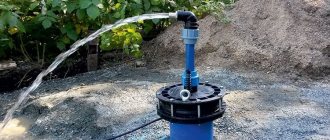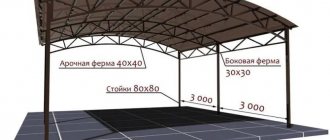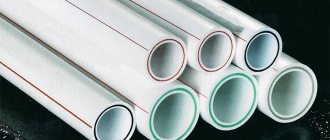The most high-tech material for the manufacture of pipelines is polypropylene. Due to its technical characteristics, properties, and low price, it is superior to metal products. Polypropylene pipes are sold at a hardware or plumbing store. Anyone can install a plastic pipeline.
Polypropylene pipes for heating
What properties do different types of polypropylene pipes have?
Polypropylene is a thermoplastic synthetic non-polar polymer. The polymerization method using a Ziegler-Natta catalyst was invented in 1957, and since then the production of products with an isotactic structure characterized by high strength
, heat resistance and a high degree of crystallinity.
Polypropylene is a material that is resistant to acid, alkaline and saline solutions, as well as other inorganic substances. It does not absorb liquid and retains its electrical insulating properties over a wide range of temperatures.
Based on polypropylene, various modified materials are produced, such as thermoplastic, high-strength plastic and other environmentally friendly products. Recycling and recycling are a technological process, due to which polypropylene is actively displacing products made from other types of plastics from the world market.
Polypropylene melts at a temperature of +164…+170 °C
, Brinell hardness ranges from 40 to 70 MPa, brittleness temperature - from
-10 to -15 ° C
, tensile failure stress (kgf/cm2) - from 250 to 400, flexural modulus of elasticity (kgf) - from 6700 to 11900 .
A huge number of products that are popular on the market today are made on the basis of sheet propylene. To produce this material, the extrusion method is used. Depending on the shade, smoothness and other factors, sheets are divided into two classes. They are used for the production of pipeline systems, connecting them together in different ways, one of which is welding.
Product technical data sheet pn25
Not long ago, manufacturers developed and put into mass production a polypropylene pipe pn25. Its technical characteristics are described in detail in the product passport.
| № | Characteristic name | Values for polypropylene pipes: dimensions | |||||
| 20÷3,4 | 25÷4,2 | 32÷5,4 | 40÷6,7 | 50÷8,3 | 63÷10,5 | ||
| 1 | Inner Ø | 13.2 mm | 16.6 mm | 21.2 mm | 26.6 mm | 33.4 mm | 42.0 mm |
| 2 | Specific heat capacity | 1.75 kJ/kg0С | |||||
| 3 | Ø tolerance | +0.3mm | +0.3mm | +0.3mm | +0.4mm | +0.5mm | +0.6mm |
| 4 | Linear expansion, (1/0С) | 3,5÷10-5 | |||||
| 5 | Heating time during welding | 5 sec | 7 sec | 8 sec | 12 sec | 18 sec | 24 sec |
| 6 | Roughness coefficient(equivalent) | 0.015 mm | |||||
| 7 | Cooling time, (seconds) | 120 sec | 120 sec | 120 sec | 240 sec | 250 sec | 360 sec |
| 8 | Tensile strength | 35 MPa | |||||
| 9 | Normative series | S2.5 | |||||
| 10 | Elongation at break (relative) | 350% | |||||
| 11 | Weight (kg/linear meter) | 0,175 | 0,272 | 0,446 | 0,693 | 1,075 | 1,712 |
| 12 | Tensile yield strength | 30 MPa | |||||
| 13 | Melt flow index PPR | 0.25 g/10 min | |||||
| 14 | Thermal conductivity | 0.15 W m/0С | |||||
| 15 | Heating time during welding | 5 sec | 7 sec | 8 sec | 12 sec | 18 sec | 24 sec |
| 16 | Modulus of elastic layer PPR | 900 MPa | |||||
| 17 | Depth of the pipe socket (minimum) when welding | 14 mm | 15 mm | 17 mm | 1 8 mm | 20 mm | 24 mm |
| 18 | Pipe density (equivalent) | 0.989 g/m3 | |||||
| 19 | Volume (internal) linear meter/l | 0,137 | 0,217 | 0,353 | 0,556 | 0,876 | 1,385 |
| 20 | Modulus of elastic layer PPR + fiber | 1200MPa | |||||
| 21 | Dimensional ratio(standard) | 6SDR | |||||
| 22 | PPR Density | 0.91 g/m3 | |||||
| 23 | Pressure (nominal), PN | 25 bar | 25 bar | 25 bar | 25 bar | 25 bar | 25 bar |
| 24 | Welding time | 4 sec | 4 sec | 6 sec | 6 sec | 6 sec | 8 sec |
A new product in the metal-plastic industry with high quality and properties is a polypropylene pipe pn25. The technical characteristics are presented in detail in the table above. It was she who was able to solve the problem with the high coefficient of thermal expansion of plastic pipe products. This makes it possible to use it in drinking water supply systems, hot water supply, installation of heating and other utilities. And also for transporting other liquids or gases that are not aggressive to the materials from which they are made.
Types of polypropylene pipes
Polypropylene (accepted international designation - PP) has been used for quite a long time for the manufacture of pipes as a base material. However, only the development of modern technologies has made it possible to obtain products that can be used for hot water supply and heating systems.
Polypropylene itself is characterized by its pronounced inertness to the chemical effects of a possible liquid coolant medium. However, in terms of heat resistance and strength, different types can differ significantly from each other.
So, pipes made of this material are divided into three main types, which have their own designations:
PP-N are intended for cold water only
- PP-N is the first type of polypropylene pipes, inert to chemical influences, but not resistant to elevated temperatures. Therefore, they are intended for cold water supply, sewerage, drainage systems, ventilation and other applications where elevated temperatures are not expected. Very often, this type of pipe is prevalent for industrial production lines, as it is highly resistant to increased internal pressure.
The range of possible applications of PP-V pipes is somewhat wider, but for heating they are still “weak”
- PP-B is the second type of polypropylene pipes, which has all the same advantages of PP-N, but, in addition, has the ability to withstand temperature loads of low amplitude. Therefore, they can be installed on separate main sections of “warm floor” systems. And also in hot water supply circuits, provided that the water or coolant does not heat above 50 degrees.
However, the main scope of application of PP-B is different. Most often, such pipes are used for sewer systems, since the material from which they are made has a sufficient degree of impact strength and heat resistance for this area.
Only PPR pipes are fully suitable for heating systems
- PPRC, PPR or PP-3 is the most advanced type of pipes that is used in hot water supply and heating systems, that is, where temperatures can exceed 50 degrees and there is a possibility of increased compression loads. Increased heat resistance and mechanical strength are achieved thanks to special production technologies, in which ethylene molecules are introduced into the molecular lattice of propylene during synthesis.
PPR are pipes that are most widely used in domestic conditions, as they have a pronounced resistance to internal pressure and temperature changes.
Polypropylene pipes (PPR), used in domestic conditions, in turn, are divided into several types, depending on resistance to baric loads: PN -25; PN -20; PN -16; PN -10. Their main characteristics are given in the table:
| Type of polypropylene pipes | Nominal working pressure | Scope of pipe use | |
| MPa | technical atmospheres (kgf/s²) | ||
| PN-10 | 1 | 10.21 | Connection to the “warm floor” circuit, the coolant in the system of which has a temperature of no higher than 45 ° C, or cold water supply. This type of pipe is designed for a system pressure of no more than 1 MPa. It is the most affordable due to its rather low performance characteristics. |
| PN-16 | 1.6 | 16.32 | Cold and hot water supply with a temperature of no more than 60˚C and a pressure of no more than 1.6 MPa. |
| PN-20 | 2 | 20.40 | Cold and hot water supply in an autonomous system with low pressure and no water hammer. The coolant temperature for this type of product should not exceed 80˚C, and the pressure should not exceed 2.0 MPa. |
| PN-25 | 2.5 | 25.49 | Hot water supply and heating with coolant up to 90÷95˚С, including in the central heating system. The pressure for which they are designed is 2.5 MPa. |
Each type of pipe is produced in a fairly wide range of diameters, internal and external: on which the wall thickness depends
| Outer diameter, mm | PN-10 | PN-16 | PN-20 | PN-25 | ||||
| Internal Ø, mm | Wall thickness, mm | Internal Ø, mm | Wall thickness, mm | Internal Ø, mm | Wall thickness, mm | Internal Ø, mm | Wall thickness, mm | |
| 16 | — | — | 11.6 | 2.2 | 10.6 | 2.7 | — | — |
| 20 | 16.2 | 1.9 | 14.4 | 2.8 | 13.2 | 3.4 | 13.2 | 3.4 |
| 25 | 20.4 | 2.3 | 18 | 3.5 | 16.6 | 4.2 | 16.6 | 4.2 |
| 32 | 26 | 3 | 23 | 4.4 | 21.2 | 5.4 | 21.2 | 3 |
| 40 | 32.6 | 3.7 | 28.8 | 5.5 | 26.6 | 6.7 | 26.6 | 3.7 |
| 50 | 40.8 | 4.6 | 36.2 | 6.9 | 33.2 | 8.4 | 33.2 | 4.6 |
| 63 | 51.4 | 5.8 | 45.6 | 8.4 | 42 | 10.5 | 42 | 5.8 |
| 75 | 61.2 | 6.9 | 54.2 | 10.3 | 50 | 12.5 | 50 | 6.9 |
| 90 | 73.6 | 8.2 | 65 | 12.3 | 60 | 15 | — | — |
| 110 | 90 | 10 | 79.6 | 15.1 | 73.2 | 18.4 | — | — |
Naturally, the values of diameters and wall thicknesses directly affect the resistance of pipes to temperature and pressure, which, in principle, determines the duration of their possible operation in certain conditions:
| Coolant temperature ˚С | Service life, years | Pipe type | |||
| PN-10 | PN-16 | PN-20 | PN-25 | ||
| Permissible excess pressure (kgf/cm²) | |||||
| 20 | 10 | 13.5 | 21.7 | 21.7 | 33.9 |
| 25 | 13.2 | 21.1 | 26.4 | 33 | |
| 50 | 12.9 | 20.7 | 25.9 | 32.3 | |
| 30 | 10 | 11.7 | 18.8 | 23.5 | 9.3 |
| 25 | 11.3 | 18.1 | 22.7 | 28.3 | |
| 50 | 11.1 | 17.7 | 22.1 | 27.7 | |
| 40 | 10 | 10.1 | 16.2 | 20.3 | 25.3 |
| 25 | 9.7 | 15.6 | 19.5 | 24.3 | |
| 50 | 9.2 | 14.7 | 18.4 | 23 | |
| 50 | 10 | 13.9 | 17.3 | 23.5 | 21.7 |
| 25 | 8 | 12.8 | 16 | 20 | |
| 50 | 7.3 | 11.7 | 14.7 | 18.3 | |
| 60 | 10 | 7.2 | 11.5 | 14.4 | 18 |
| 25 | 6.1 | 9.8 | 12.3 | 15.3 | |
| 50 | 5.5 | 8.7 | 10.9 | 13.7 | |
| 70 | 10 | 5.3 | 8.5 | 10.7 | 13.3 |
| 25 | 4.5 | 7.3 | 9.1 | 11.9 | |
| 30 | 4.4 | 7 | 8.8 | 11 | |
| 50 | 4.3 | 6.8 | 8.5 | 10.7 | |
| 80 | 5 | 4.3 | 6.9 | 8.7 | 10.8 |
| 10 | 3.9 | 6.3 | 7.9 | 9.8 | |
| 25 | 3.7 | 5.9 | 7.5 | 9.2 | |
| 95 | 1 | 3.9 | 6.7 | 7.6 | 8.5 |
| 5 | 2.8 | 4.4 | 5.4 | 6.1 | |
The data presented in the tables is the result of long-term testing of pipes under various conditions, which even theoretically may arise during their operation, so it is worth taking them into account in the process of selecting the required material.
Polypropylene pipes can have different colors, but when choosing them you should not pay special attention to it (perhaps only from an aesthetic point of view) since the external color does not in any way determine the characteristics of the products and does not affect their quality.
A red or blue stripe may be applied to the surface of some pipes - it serves as a specific indicator of the purpose of a particular type. Thus, blue color is applied to cold water supply pipes, and red indicates the ability of the products to withstand elevated temperatures in the hot water system or heating circuit.
When purchasing pipes, be sure to pay attention to their markings.
In addition to colored stripes, the pipes are marked with letters, which indicate their characteristics and intended purpose for installation in certain water supply or heating systems, and you also need to pay attention to it. The meaning of the marking indicators corresponds to the information given in the tables.
As can be seen from the presented characteristics, PN-20 products are optimally suited for the heating system, but the ideal option would still be PN-25 pipes, which have pronounced resistance to elevated temperatures and pressure, even with a good margin.
Advantages and disadvantages
Advantages:
- The walls of the parts are smooth inside. Plaque does not accumulate on them.
- The material suppresses the noise of water flowing through the system.
- Low thermal conductivity prevents condensation from accumulating on the outside of the products.
- Light weight, allowing for independent installation without the help of a second person.
- They are not destroyed by exposure to chemicals.
- There is no rust on the pipes, which increases their durability.
- The active service life is about 50 years. If the system is designed for cold water supply, the service life increases to 100 years.
Disadvantages of polypropylene pipes:
- Low heat resistance. The material cannot withstand prolonged exposure to high temperatures.
- Lack of ability to bend at a large angle.
- Destruction due to prolonged exposure to ultraviolet radiation
- High coefficient of thermal expansion. Therefore, during installation it is necessary to install compensators.
If you take into account the disadvantages, you can make a durable pipeline that will work for a long period of time without breakdowns.
Disadvantage of polypropylene pipes
Marking of polypropylene pipes
When choosing polypropylene pipes, in addition to the PP type and the presence of reinforcement in the marking, you must also look at the maximum operating pressure. According to GOST, this parameter is designated PN and a number from 10 to 25.
Marking of polypropylene pipes
Depending on this designation, PPR pipes are distinguished as follows:
- PN10 – thin-walled for cold water and “warm floors” with water up to +450C.
- PN16 – universal for cold water and hot water supply up to +600C.
- PN20 – thick-walled for water with temperatures up to +950C.
- PN25 – with reinforcement for hot water supply and heating (also up to +950C).
For a short period of time, one or another PPR pipe for water supply can withstand exceeding the specified temperatures. But with prolonged excessive heating, it will gradually begin to collapse. And as a result, its service life of half a century declared by manufacturers will be significantly reduced.
Welding and heating time of polypropylene pipes
Specifications
Technical characteristics of polypropylene pipes:
- Frost resistance indicator - up to -15 degrees. Pipes made from this material are not suitable for the manufacture of external water pipes.
- Low thermal conductivity. Thanks to this, the liquid reaches from one end of the pipeline to the other with a minimum temperature difference.
- The density of polypropylene is 0.91 kg/cm2.
- Chemical resistance of the material.
- High linear expansion rate.
- Mechanical strength - 35 N/mm.
- Softening of polypropylene begins at 140 degrees.
- Heat resistance to coolants - up to 120 degrees.
- Plastic melting starts at 170 degrees.
- The operating pressure range is 10–25 atmospheres.
Pipes from this material are made with diameters from 10 to 125 mm. The parts are connected using a special soldering iron. Thanks to soldering, a strong, airtight seam is obtained.
When installing polypropylene pipes, it is important to take into account its high linear expansion. When connecting household appliances and radiators, special compensators must be installed.
Main pipe diameters according to GOST
The diameter in the marking of PPR water pipes is indicated as the outer diameter. Moreover, the larger it is and the higher the PN, the thicker the pipe wall. Products of 16–20 mm are used for installing water pipes throughout the apartment and cottage. 25–32 mm is for the riser. Larger diameter options are intended for pipelines in multi-storey buildings, main networks and sewerage.
How to correctly calculate the diameter of a pipe based on its purpose
Advantages of polypropylene
Creating a heating system from propylene with your own hands has a number of advantages:
- Simple and quick installation;
- The material is lightweight, so it is convenient to deliver and move from place to place, if necessary;
- Can be used for both hot and cold water supply;
- Easy to maintain;
- High degree of ignition protection;
- No need to paint or tint;
- Sealed, leaks are minimal;
- Sufficiently resistant to high pressure;
- Salts and scale are not deposited on it, and rust does not occur;
- The risk of development and spread of bacteria is minimized;
- Hygienic, non-toxic to people. When heated, it does not emit toxic fumes;
- There are no vibrations of the liquid when transporting it through heating pipes;
- Does not deform even at very high temperatures (certain types of plastic);
- The material is inexpensive and has a long service life.
In addition to heating systems, pipes are used in many places in construction:
- Heating installation;
- Water supply;
- Installation of risers;
- On livestock farms;
- At industrial enterprises;
- For installing a heated floor system.
Aluminum reinforcement
There are solid and perforated reinforcement with aluminum foil.
Continuous reinforcement with aluminum foil is the most economical option for reinforced pipes.
In this case, a thin layer of aluminum is located between the layers of propylene, due to which the structure of the pipe is significantly strengthened. But these types of products, as well as others, are distinguished by a number of limitations in operation:
- the water temperature should not reach +60 °C, otherwise the pipe may become deformed and burst if overheated;
- all joints should be cleaned before soldering, which will significantly reduce the time spent on installing the system;
- the temperature at which aluminum-reinforced pipes freeze is only -5 °C. Therefore, when using this type of polypropylene pipe in a private house, it is strictly forbidden to turn off the heating;
- Experts do not recommend using these types of products to supply hot water, since due to constant temperature changes, the aluminum layer may collapse over time.
Aluminum perforation means a mesh with small holes. During the extrusion of polypropylene pipes, viscous material enters the perforations, thereby ensuring adhesion between the polymer and metal.
Thanks to aluminum reinforcement, the coefficient of thermal expansion is significantly reduced. However, some difficulties may arise during the installation of engineering systems. When socket welding, the aluminum shell and outer layer of polymer are first removed, and the pipe is cleaned to an amount that corresponds to the depth of its insertion into the fitting.
There are types of polypropylene pipes that do not require removal of the outer layer during installation. They, in turn, also have some disadvantages:
- Only the outer layer of the product, equal to half the wall thickness, is attached to the fitting;
- a nozzle for welding equipment is required;
- After you cut the pipe, it will need to be trimmed.
Glass fiber reinforcement
Types of pipes marked PPR-FB-PPR consist of two layers of polypropylene, between which fiberglass is located, which is why this product is called a “fiberglass” pipe.
A pipe reinforced with glass fiber compares favorably with a product with aluminum reinforcement:
- installation does not require calibration and cleaning;
- material and time costs are reduced due to the fact that the soldering procedure is similar to the connection of solid plastic pipes or other stripped polymer products;
- a pipe reinforced with fiberglass does not delaminate because it has a homogeneous structure;
- Glass fiber increases the rigidity of the pipes.
The disadvantage of a fiberglass pipe is that its thermal expansion is 6% higher than that of products with aluminum reinforcement.
Internal reinforcement with polypropylene
These types of products are essentially metal-plastic pipes, the outer layer of which is made of polypropylene. Such pipes are resistant to high temperatures.
The disadvantages of this type of polypropylene pipes are characterized by:
- multilayer - the presence of adhesive joints of two different materials;
- attaching only the outer layer of the product to the fitting;
- the possibility of contact of reinforcement with the transported medium.
Metal-polymer polypropylene pipes
Modern types of polypropylene pipes are distinguished by a classic five-layer metal-polymer construction, shown in the figure below:
This type of polypropylene pipes is used for water supply and heating systems.
Modern polypropylene products have a multilayer construction, just like metal-plastic products. The only difference is that for a classic metal-plastic pipe, PEX or PE-RT polyethylene is used as a polymer, and not polypropylene.
Below is a small table that will help you understand the technical characteristics of all types of polypropylene pipes and the features of their application:
| Types of reinforcement | Specifications | ||||
| Maximum temperature, °C | Minimum temperature, °C | Thermal expansion, deformation | Maximum pressure, atm | Scope of application | |
| Solid aluminum | 60 | 5 | Average | 1 | Cold water system |
| Perforated aluminum | 70 | 10 | Average | 1.5 | Open type heating |
| Fiberglass | 90 | 20 | Low | 2 | Hot water supply system, heating, heated floor |
| Composite | 95 | 20-30 | Absent | 2,5–3 | Any |
Color
PP pipes come in different shades. The color indicates the operational features of the part:
- White - used for the manufacture of pipelines inside apartments and private houses. Easy to connect, which speeds up installation. Not suitable for making outdoor water pipes. The material quickly loses strength when the temperature drops below 0 degrees.
- Gray - suitable for the manufacture of heating systems. This is due to its high thermal stability.
- Black - sewer drains and drainage channels are made from such tubes. By adding chemicals to the composition, manufacturers improve the technical characteristics of products.
- Green - used for the manufacture of liquid supply systems for garden plots and vegetable gardens. Cannot withstand high water pressure.
Green colored pipelines should be checked more often than others. Due to low strength, leaks and breakdowns often occur in the system.
Black polypropylene pipes
MANUFACTURERS OF POLYPROPYLENE PIPES
Domestic and foreign manufacturers offer a wide selection of high quality polypropylene pipes. Moreover, the products of Russian concerns (Valtec, Pro Aqua) are not inferior to foreign brands.
| Manufacturer | Polypropylene material | Operating temperature, ºC | Working pressure, bar | Outer diameter, mm | Wall thickness, mm | Service life, years |
| Valtec (Russia) | PPR | 70-95 | 9-25 | 20-110 | 2,8 — 8,3 | 50 |
| BANNINGER (Germany) | PP-RST, PP-RCT, PP-RCT, PP-R CT | -10 +95 | 0-10 | 20-110 | 2,3-15 | 50 |
| Ecoplastic FIBER (Netherlands) | PP-RCT | up to +70 | 6-35 | 20-125 | 2,5-4.0 | 50 |
| About Aqua (Russia) | PP-R | -10 +100 | 0-10 | 20-125 | 3,4-20,8 | 50 |
In our company you can order Valtec products. It is used for external and internal communications and has an optimal combination of price and quality. As the official distributor of this Russian-Italian manufacturer, we have the opportunity to offer you Valtec PP pipes and fittings at a better price than our competitors.
What is special about polypropylene pipes?
Polypropylene pipes have the following strengths:
- Light weight compared to a metal pipe. This greatly simplifies the installation and transport of pipes and fittings.
- Not afraid of rust, dirt, aggressive liquids.
- The organization of the pipeline occurs very quickly: no complex devices or special skills are required.
- Duration of operation – 50 years or more.
- Many types of polypropylene pipes have good sound insulation characteristics.
- Polypropylene for heating is completely environmentally friendly.
There are also some disadvantages:
- Significant coefficient of thermal expansion. Reinforced products have it at a level of 2-3.5 mm per 1 m, solid ones are 4-5 times more pliable.
- As for pipes with external reinforcement, it will need to be treated with special devices.
- The market is replete with counterfeits of polypropylene pipes: in this case, the outer layer is especially susceptible to defects.
- The high fluidity of polypropylene pipes means that even the product’s own weight can contribute to deformation. To avoid such phenomena, the polypropylene pipeline is equipped with special fasteners, which are installed every half meter.
- The significant rigidity of polypropylene implies the need for a large number of fittings when organizing rotary sections.
Characteristics of PPR pipes and scope
Each PPR product is marked with encrypted data on the diameter and wall thickness, operating pressure, service class, pipe material and much more.
There are several modifications of polypropylene, each of which has its own operating characteristics:
- PPH – products made from homopolymer, used exclusively in cold water supply.
- PPV pipes are made of block copolymer, the scope of application is cold water supply and installation of heated floors.
- PPR is the most common material - a random copolymer of polypropylene, used in the installation of heated floors, for hot water supply and water heating.
- PPs – polypropylene with improved heat-resistant properties, rarely used in domestic water supply systems.
For cold water supply and drinking water supply, it is enough to use PN10 pipes made of homopolymer, since the low temperature environment practically does not cause linear expansion, and the pressure in the household pipeline is below 1 MPa.
In heating systems and for supplying hot water, it is advisable to install reinforced pipes with fiberglass or aluminum foil (basalt fiber has only recently appeared on the pipe market and has not yet gained much popularity).
Reinforcement in a hot water pipeline is necessary as it restrains the linear expansion of polypropylene and prevents deformation of the pipes. Products with an aluminum layer can be used in any conditions, since the metal foil provides additional rigidity without practically increasing the outer diameter. Fiberglass is best used indoors.
Important! If the pipeline section will pass through open air, it must be protected from ultraviolet rays. The ideal solution would be to use a polyurethane foam shell.
Properties
Polypropylene pipes have a number of properties that distinguish them from products made from other materials:
- low density;
- high strength;
- resistance to alkalis and acids;
- good wear resistance;
- protection against rust formation;
- low electrical conductivity;
- resistance to water hammer and multiple bends;
- harmlessness during operation;
- easy weldability when soldering with a soldering iron.
To improve the properties of polypropylene, additional additives may be added to the composition when manufacturing parts from this material.
The main reasons for choosing polypropylene pipes for the heating circuit
The reasons, which, in fact, are the advantages of polypropylene pipes are as follows:
- Polypropylene has a distinctly low weight, which greatly simplifies its delivery to the work site and installation itself - no special devices or equipment are required.
- If you have the necessary tools, polypropylene pipes are easy to install, and welding techniques can be learned very quickly.
- The manufacturing material is absolutely harmless for residential premises, since it does not change its chemical composition even with strong heating and does not emit toxic fumes into the air.
- Thanks to the stabilizers included in polypropylene, pipes can withstand water hammer and thermal loads, and even freezing of water inside without rupture.
- The smooth inner walls of the pipes promote uniform, turbulence-free and noise-free circulation of the coolant.
- Both the pipes themselves and their components are inexpensive. A wide selection of components allows for installation of a circuit of any complexity.
A little training and any owner can carry out independent installation
- A circuit made of high-quality pipes, if installed correctly, will last at least 20–30 years.
- The aesthetic appearance of the pipes makes it possible not to spoil the interior, and the contour itself usually does not require either painting or additional decoration.
So, polypropylene pipes with a reinforcing aluminum layer are excellent for heating circuits of autonomous and central systems. In addition, the installation of this material is quite simple and feasible even for people who have no experience in such work. After several training sessions on the installation of individual components, the assembly process of the entire circuit can be carried out on your own.
Application of different types of pipes in practice
Despite the data given in the table above, it is worth clearly distinguishing the scope of application of each type of pipe. This is not the absolute truth, this is my humble opinion. And although the manufacturer allows the use of their pipes almost everywhere, I look at things with a realistic look. After all, you need to have a good margin of strength and temperature, as in Soviet times, in order to be confident in the quality of the work performed. So…
Polypropylene for water supply
Any of the pipes described in the table above are suitable for cold water supply. For hot water, I strongly recommend using polypropylene with reinforcement, both fiberglass and aluminum. I generally refrain from using unreinforced products, even for cold water. After all, the cost of pipes with reinforcement is not much more expensive.
Polypropylene for heating a private house
All characteristics are suitable for pipes of all types of reinforcement. The pressure and temperature in your own, individual system are low and you don’t have to worry about a pipe breaking. However, it is better to look towards PN25 fiberglass or aluminum.
For heating a private home, a PPR pipe is perhaps the best solution. Lower cost of installation, which you can do yourself, as well as make changes to the system later - along with these advantages, the pipes are highly reliable.
Polypropylene for central heating
In accordance with GOST 32415-2013, the fifth class of operation of plastic pipes can withstand a temperature of 80°C for a long time. To be more precise, the minimum service life must be at least 10 years. The same regulatory document states that already at a temperature of 90°C the service life is reduced to 1 year (minimum). And the new pipe will withstand even a coolant temperature of 100°C, but this is an emergency mode and lasts only 100 hours.
Read more about the characteristics of polypropylene pipes and their markings.
Of course, a pipe manufacturer can make products that exceed GOST standards in terms of their characteristics. However, it is more likely that, due to the human factor, the quality will be even slightly worse than the stated requirements.
It follows from this that for reliable operation of plastic pipes in central heating systems, it is necessary to maintain the coolant temperature within the specified limits. In houses where polypropylene pipes are provided for by the design, there are no problems with this. In houses where metal heating pipes are installed by default, as a rule, no special measures are taken to limit the temperature. Installation of PP pipes can only be done at your own peril and risk!
Of course, you can be flexible in your thinking and use plastic in those places where the coolant passes through many apartments and cools down before reaching the intended installation site. As an example: a single-pipe “Leningrad” with supply from above or through the riser of the next room, and the replacement installation is located on the lower floors - the temperature of the coolant in such areas drops significantly. However, whatever one may say, this is an amateur activity, for which the installer bears responsibility.
Laying pipes on the street
One of the features of PPR pipes is that when water freezes in it, the pipe does not burst, but expands. When the water thaws, the pipe returns to its original state. I myself have witnessed this phenomenon many times. Moreover, frozen water pipes are very difficult to break by mechanical force, this is subject to a quality choice.
Polypropylene is perfect for laying pipes in a personal plot or country house. You couldn't imagine better material!
Which PPR pipes are more convenient to install?
The easiest and fastest way to install, of course, is single-layer polypropylene pipes. For installation it is enough:
- cut the product with a hacksaw or pipe cutter,
- rub away burrs on the edges,
- connect structural elements using a fitting or special glue (liquid welding).
We recommend that you read: Replacing old pipes with polypropylene on your own
The principle of installing multilayer PPR pipes is the same, however, in this case cold welding is not suitable, since it will only glue the outer layers and will not provide a reliable connection.
Therefore, multilayer pipes are best connected by hot welding or using special multilayer threaded fittings.
Attention! Do not attempt to thread a pipe or fitting yourself. There is a high probability that the resulting threads will not match, which means the connection will not be airtight. It is better to buy fittings with ready-made standard threads.
Pipes with aluminum reinforcement require special preparation before installation. If layers of fiberglass pipes are literally soldered into each other, then aluminum foil is connected to polypropylene using glue, which means there is a possibility of delamination.
To avoid this negative consequence, before welding PPR pipes with aluminum reinforcement, it is necessary to remove a small section of foil and solder the inner and outer layers of polypropylene together. Thanks to this action, water will not be able to penetrate between the layers, which means there will be no threat of deformation and destruction of the pipeline.
Applying propylene to the internal surfaces of pipes
We are talking about metal-plastic pipes that have an outer polypropylene layer. They tolerate increases in temperature well.
The disadvantages of these products include the following:
- The presence of several layers. Three different substances are connected into one structure using an adhesive method.
- The fitting is attached only to the outer layer, which makes the connection not very strong.
- The transported medium often comes into direct contact with the reinforcement, which is why the material can gradually wear out.
Installation Tips
The pipe material must be suitable for the purpose of installation. Be sure to pay attention to all the characteristics if you are assembling a heating system;
- Connect the elements correctly. You can use a tee; there is no metal in it, so salts will not be deposited;
- Carefully plan all connections and the entire system. Also cover traces of linear expansion;
- Calculate everything carefully, taking into account the development of different situations. It is better to leave space in reserve, especially where there is a wall;
- To do everything efficiently, pay attention to the conditions. Especially if the work takes place on the street. This way the soldering iron can cool down much faster;
- If you are fixing several elements together, do not rush. They must be firmly and firmly connected;
- The connection must be correct and tight;
- The plastic should not overheat during work. Otherwise, it may lose its shape, causing the hole to close;
Each connection has its own type of part. It is selected taking into account all characteristics and needs. Do not try to replace one with the other, this will reduce the quality of installation.
